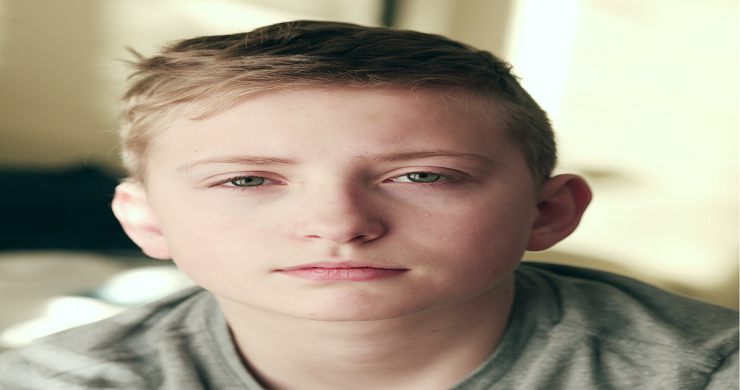Grooming: What is grooming in the context of preventing child exploitation?
Preventing child exploitation by combating “Grooming”. In the context of child exploitation “Grooming” refers to a series of manipulative actions and behaviours that an adult or older person uses to establish a trusting and emotional connection with a child or minor with the intent of engaging in sexual abuse or exploitation. This process is often used by individuals who aim to exploit children for sexual purposes, such as child pornography, sexual assault, or human trafficking. Grooming is a predatory behaviour that typically unfolds over time and follows a pattern of manipulation and deceit. Some common characteristics of grooming include:
Trust Building
The perpetrator works to gain the child’s trust, often by pretending to be a caring, supportive, or authoritative figure. This might involve offering compliments, gifts, or attention.
Emotional Manipulation
Groomers employ emotional manipulation tactics to make the child feel special, loved, or important. They might create a sense of dependence on the groomer’s attention and affection.
Secrecy
Groomers emphasize secrecy and encourage the child to keep their interactions hidden from parents, guardians, or other trusted adults. They may use threats, shame, or guilt to maintain this secrecy.
Isolation
Groomers may try to isolate the child from friends, family, or support networks to exert greater control over them. This isolation makes it more difficult for the child to seek help.
Gradual Escalation
The exploitation typically escalates slowly. Groomers may begin with non-sexual behaviours and gradually introduce more sexualized actions as the child becomes desensitized.
Online Grooming
In the digital age, grooming often occurs online. Predators may use social media, chat rooms, or other online platforms to make contact with potential victims, exploiting their trust and manipulating them into engaging in inappropriate or sexual activities.
Manipulation of Consent
Groomers might manipulate the child into believing that they are willing participants or that they are to blame for the exploitation. This can make it difficult for the child to recognize that they are being victimized.
When preventing child exploitation, it is crucial for parents, guardians, educators, and caregivers to be vigilant and informed about the signs of grooming. Education about online safety and open communication with children about their online activities are important preventive measures. If there are concerns that a child may be a victim of grooming, it’s important to report it to the appropriate authorities, such as law enforcement or child protective services, to ensure the child’s safety and well-being.
How can parents recognize signs of grooming?
Recognizing signs of grooming is essential for parents and caregivers in preventing child exploitation. Grooming is a predatory behaviour pattern designed to establish a relationship of trust and control with a child, making it difficult for the child to recognize the danger. Here are some signs that parents can watch for:
Excessive Gift-Giving
The groomer may excessively give gifts, money, or special attention to the child as a way to establish a bond and make the child feel indebted.
Secrecy and Isolation
Groomers often insist on secrecy, encouraging the child to keep the relationship hidden from parents or guardians. They may also try to isolate the child from friends and family.
Emotional Manipulation
Groomers use flattery, emotional support, and affection to make the child feel special, loved, or important. They may play on the child’s emotions to create a sense of dependence.
Inappropriate Conversations
Groomers engage in inappropriate conversations, including sexual topics, with the child. These conversations may start subtly and escalate over time.
Online Behavior
In the case of online grooming, the groomer may try to engage with the child on social media or in chat rooms. They might request personal information or photos, or try to meet in person.
Secret Devices
Children might be secretive about their online activities or have secret devices (e.g., smartphones, laptops, or tablets) provided by the groomer.
Change in Behavior
Be alert to changes in your child’s behaviour, especially if they become withdrawn, anxious, or secretive about their activities and relationships.
Manipulation of Consent
Groomers may manipulate the child into believing that they are willing participants or that they are to blame for the grooming. They might use guilt, shame, or threats to maintain control.
Inappropriate Content or Photos
Be aware of any inappropriate content or photos on your child’s devices or social media accounts, and discuss these issues openly with your child.
Excessive Screen Time
Groomers often use online platforms to establish contact with children. An increase in screen time or secretive online activity can be a sign.
Withdrawal from Activities
Children who are being groomed may withdraw from their usual activities, friends, or hobbies.
Change in Friends
Be aware of new friends or acquaintances that your child has met online, especially if these relationships seem secretive.
Changes in Sleep Patterns
Grooming can be emotionally distressing for a child, which may manifest in changes in sleep patterns, such as nightmares or difficulty sleeping.
Physical Symptoms
In some cases, the child may exhibit physical symptoms of distress, such as stomachaches or headaches.
It’s important for parents and caregivers to maintain open and non-judgmental communication with their children about their online and offline activities. Encourage children to share their experiences and concerns. If you suspect that your child may be a victim of grooming, it’s important to report it to the appropriate authorities, such as law enforcement or child protective services, to ensure the child’s safety and well-being. Additionally, consider seeking professional help, such as therapy or counselling, to support the child’s emotional well-being and recovery.
What are the laws and penalties related to grooming?
Laws and penalties related to grooming and preventing child exploitation vary by jurisdiction, and they can differ significantly from one place to another. Grooming is a serious offence in many jurisdictions, as it often precedes child sexual exploitation, abuse, or other criminal activities. To provide a general overview, I’ll describe some common legal principles related to grooming and the associated penalties:
Grooming Laws
Many jurisdictions have laws specifically targeting grooming behaviours. These laws may criminalize actions intended to prepare a child for sexual exploitation, such as establishing trust, luring, or attempting to engage the child in sexual activities.
Sexual Offense Laws
Grooming often involves actions that may be considered sexual offences, such as indecent exposure, sending explicit materials to a minor, or attempting to engage in sexual activity with a minor. For these offences penalties vary but can include imprisonment and registration as a sex offender.
Child Luring or Enticement
Laws related to child luring or enticement are designed to address grooming behaviours. These laws criminalize communication or actions with the intent to persuade, induce, or entice a child to engage in sexual activity. Penalties may include imprisonment, fines, and registration as a sex offender.
Child Pornography Laws
If grooming includes the creation, distribution, or possession of child pornography, separate child pornography laws may apply. Penalties for these offences can be severe, including imprisonment and registration as a sex offender.
Solicitation Laws
Grooming may involve soliciting a child for sexual purposes. Laws related to the solicitation of a minor often carry penalties, including imprisonment and registration as a sex offender.
Criminal Attempt Laws
In many jurisdictions, the attempt to commit a crime, such as the sexual exploitation of a minor, is also a criminal offence. Criminal attempt penalties vary, but they can include imprisonment.
Penalties
Grooming-related offence penalties can be significant and may include imprisonment, fines, probation, parole, mandatory counselling, and registration as a sex offender. Penalties can be more severe if the grooming leads to actual child sexual exploitation or abuse.
Reporting Laws
Some jurisdictions have mandatory reporting laws that require professionals (e.g. teachers, and healthcare providers) who work with children to report suspected grooming or child abuse to the appropriate authorities.
It’s important to consult the specific laws in your jurisdiction for the most accurate and up-to-date information. If you suspect that grooming is occurring or if a child has been a victim of grooming, it is crucial to report the situation to the local law enforcement authorities or child protective services. Prompt reporting can help prevent potential harm to children and ensure that the perpetrators face legal consequences for their actions.
Preventing Grooming: Safeguarding Children in the Digital Age
The digital age has brought new opportunities for children to learn, connect, and have fun. However, it has also introduced new risks, including the threat of grooming, where individuals with ill intentions attempt to manipulate and exploit children for their own gain. Preventing grooming is a shared responsibility of parents, caregivers, educators, and society as a whole. In this article, we will explore effective strategies and steps to protect children from grooming in the online and offline worlds.
Education and Awareness
One of the most effective ways to prevent grooming is to educate ourselves and our children about the tactics used by groomers. Awareness is the first line of defence. Parents, caregivers, and children should be informed about the signs and red flags, both online and offline.
Maintain Strong Parental Involvement
Active parental involvement plays a crucial role in preventing grooming. By staying involved in your child’s life, both online and offline, you can gain insight into their friends, activities, and interests. You should also be aware of their online activities and have access to their social media accounts, if necessary.
Set Clear Boundaries
Teach children to recognize and assert their personal boundaries. They should know that it is okay to say “no” to unwanted advances or uncomfortable situations. Discuss online and offline safety rules, including not sharing personal information with strangers.
Use Parental Controls
Parental control software and filters can be used to monitor and restrict your child’s online activities. Setting age-appropriate access limits to certain websites or apps is a practical approach to safeguarding your child.
Supervision and Communication
Regularly supervise your child’s online interactions and establish a routine of check-ins to discuss their online experiences and relationships. Encourage your children to come to you if they ever feel uncomfortable or are subjected to grooming attempts.
Privacy Settings
Teach children about privacy settings on social media platforms and the importance of keeping their profiles private or visible only to friends. These settings can help protect them from unwanted attention.
Teach Critical Thinking
Equip your children with critical thinking skills so they can assess the credibility and intentions of people they meet online. Teach them to question suspicious requests or information.
Trust Your Instincts
Instil in your children the importance of trusting their instincts. If something doesn’t feel right online or offline, they should share their concerns with a trusted adult.
Reporting and Documentation
Instruct children on how to report inappropriate or suspicious behaviour online through platform reporting tools. It’s also essential to teach them how to document grooming attempts, including conversations, and save evidence.
Know Your Child’s Friends
Be proactive in getting to know your child’s online friends, just as you would with their offline friends. If your child is secretive about their online friends, be cautious and investigate further.
Safe Online Communities
Encourage your child to participate in online communities, forums, or gaming groups that are moderated and have clear guidelines against inappropriate behaviour. Such communities are more likely to foster safe and respectful interactions.
Be a Role Model
Model healthy and respectful online behaviour for your child. Show them how to treat others with kindness and respect, both online and offline.
Educational Programs
Support school-based and community programs that educate children and parents about online safety and the risks of grooming. Knowledge is power, and these programs can empower children and adults to protect themselves.
Seek Professional Counseling
If your child has been a victim of grooming, seek professional counselling to help them cope with the emotional and psychological impact. Counselling can be crucial in the healing process.
Preventing child exploitation through grooming is a collective effort, with parents, caregivers, educators, and society working together to safeguard our children. By staying informed, maintaining open communication, and practising the strategies outlined in this article, we can help protect our children from the dangers of grooming, both in the digital age and in the physical world. It is our shared responsibility to create a safe and nurturing environment for our children to thrive.
A reliable source for information and guidance on preventing child exploitation is “Preventing Child Exploitation: A Guide for Parents and Caregivers” published by the National Center for Missing & Exploited Children (NCMEC). This guide offers valuable insights, practical tips, and resources to help parents and caregivers protect children from various forms of exploitation, including online dangers, grooming, and trafficking. You can find this resource on the NCMEC website or by searching for it in your preferred search engine.
An Australian source for information and resources on preventing child exploitation is “ThinkUKnow Australia.” ThinkUKnow is an initiative by the Australian Federal Police (AFP), Microsoft, and Datacom that provides educational materials, resources, and training to help children, parents, and teachers understand and guard against online exploitation and grooming. They offer a range of resources and programs to promote online safety for children in Australia. You can find more information and access their resources on the ThinkUKnow Australia website.




Leave a Reply